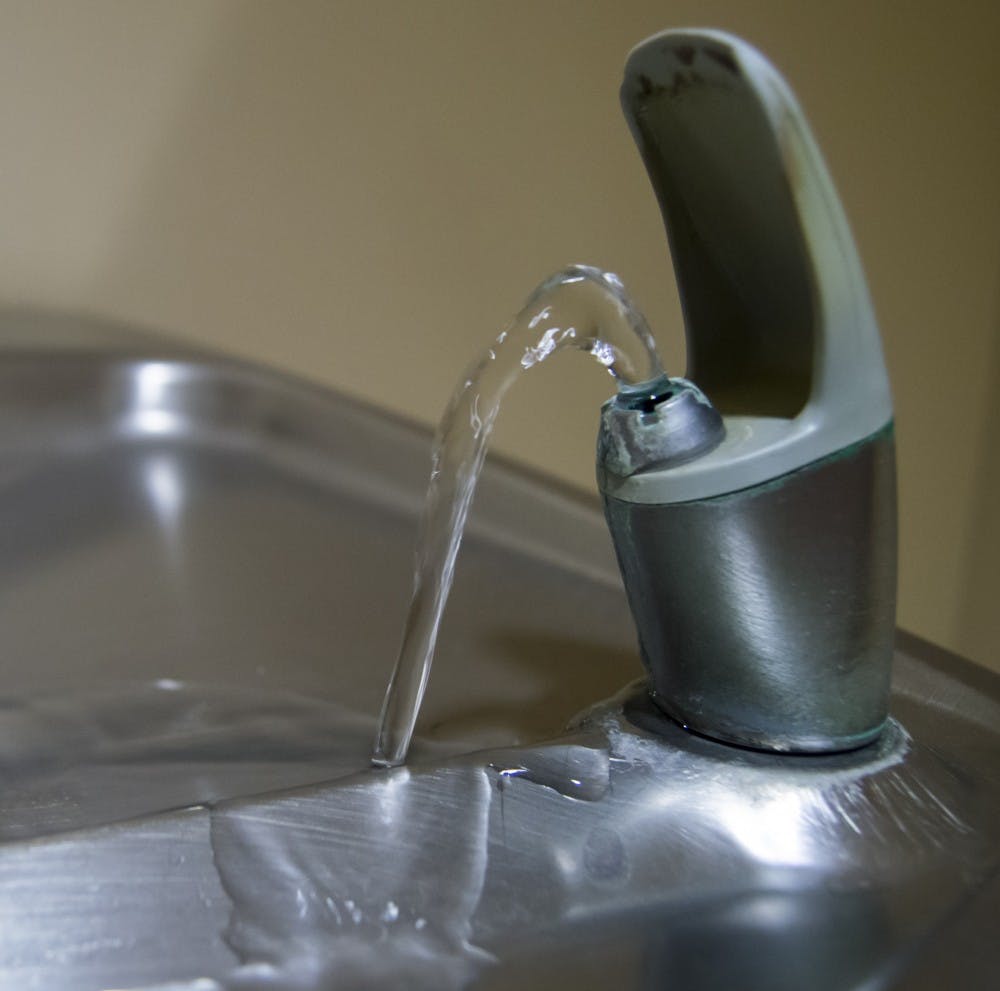This week’s 24-hour boil order aside, Muncie’s water supply appears to be safe — especially when it comes to levels of lead, a contaminant that has rocked communities across the country, including several in Indiana.
“It’s good to my knowledge,” Lee Florea, a hydrologist, said. “I haven’t seen any issues with lead or any other things we trace.”
Dangerously high lead levels were a national story in Flint when the city stopped buying water from Detroit — Flint spent $21 million on water from Detroit in 2011 — in an attempt to save money for the financially struggling city. This move was supposed to lead to a county-wide water treatment system, but it was not completed in time.
In April 2014, the city began drawing water from the Flint River as a temporary solution. The river was corrosive, not treated properly by Flint and not properly tested by the state. Lead in the city’s pipes began to leach into the water, poisoning thousands of residents, including children.
Florea serves as assistant director of research at the Indiana Geological Survey at Indiana University. He previously worked as a Ball State professor in the department of geological sciences, including on the project “Water Quality Indiana,” a Virginia Ball Center Project that investigated the water quality of York Prairie Creek.
Florea has visited Indiana American Water’s treatment plant on the southeast side of Muncie with students and approves of them.
“After touring American Water, I’m confident it’s clean when it leaves there," Florea said. "It’s just those unknowns."
The facilities there were last renovated in 2012, when the company invested $12 million in upgrades to replace century-old equipment, said Joe Loughmiller, spokesperson for Indiana American Water. The company serves Muncie and Ball State, as well as some 30 water systems in the state.
The company has spent millions of dollars in upgrading the city’s water infrastructure since then. Just last year, the company spent more than $10 million on storage tank refurbishments, pipeline replacements, fire hydrants, valves, meters and service line replacements and other equipment, Loughmiller said.
In Indiana, high levels of lead and arsenic were found in the soil of an East Chicago public housing complex in August. More than 1,000 residents, about 700 of whom are children, have been given until Nov. 30 to move out. The entire complex is set to be razed.
While not every water fountain and faucet is checked for contaminants, health officials and Indiana American Water continually check for problems. Federal law requires Muncie’s water company to test the water being sent out of its treatment plant once a year, testing for things like lead. The results are posted on the company’s website.
Testing at the tap only occurs once every three years in Muncie, however. The Environmental Protection Agency’s lead and copper rule allows for companies and cities to reduce how frequent they test at the tap if they have a track record of being below the EPA’s actionable level for lead – 15 parts per billion or 15 micrograms of lead per liter.
That actionable level of lead only triggers additional water testing and corrosion control, however. It doesn’t necessarily force change. The last time Muncie water was tested at the tap was in 2013, where five micrograms of lead per liter was found.
Muncie’s next tap water report is due up in 2017, along with the treatment center’s annual report. Loughmiller said the company has already collected tap samples and that none of them exceeded the EPA’s actionable level of 15 micrograms of lead per liter.
Lead was formerly used in water pipes either as soldering or as the actual pipes because lead is malleable and allowed some flexibility in the placement of pipes.
In Muncie, only 7 percent of water service lines have lead portions, according to an Indiana Department of Environmental Management survey, which translates to about 2,000 pipes out of 30,000. Service lines are the pipes that connect homes to water mains in the streets.
This compares to other places in the state with high percentages of water service lines with lead portions, like Bloomington, Fort Wayne and Decatur with levels of 27 percent, 28 percent and 52 percent respectively.
However, the EPA and scientists have found that no level of lead is safe.
The mineral has been found to cause serious adverse health effects in children, such as learning and behavioral problems and delayed growth, according to the Centers for Disease Control.
Lead’s effects have been linked to increased risk of high blood pressure and kidney damage in adults. Pregnant women exposed to high levels of lead may suffer miscarriages, stillbirths, premature births and low birth weight.
Lead rarely occurs naturally, according to the CDC’s website. When excessive levels of lead are found in samples, it usually comes from the water delivery system.
Lead is tasteless and odorless. To protect oneself, it takes a degree of trust in water and taking precautions like letting the tap run for several minutes before use, boiling before use, contacting a plumber to inspect pipes in homes built before 1980 and sending water samples off to designated labs listed on the Indiana State Department of Health’s website.
“You just have to trust that water is safe at some level and take precautions to protect yourself,” Florea said.





